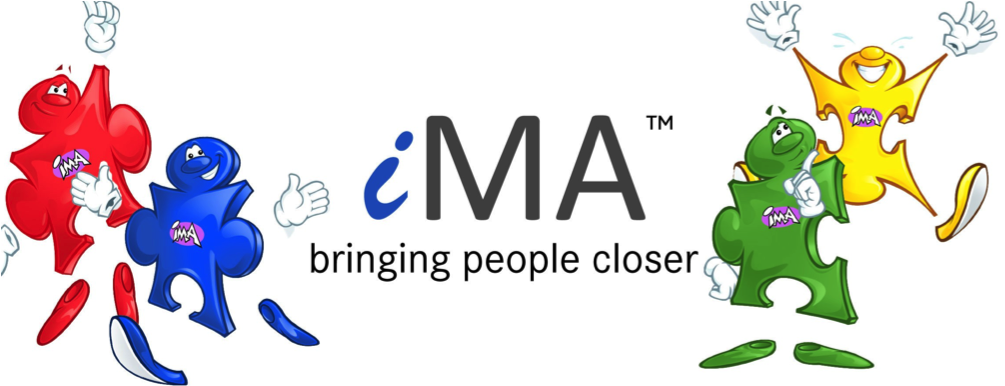Improving one-to-one communication skills can dramatically enhance your relationships—personally and professionally. Whether you’re connecting with a colleague, a client, a friend or a loved one, your ability to listen well, express yourself clearly and understand the other person’s perspective can make all the difference.
In today’s fast-paced world, where digital interactions often replace face-to-face conversations, effective interpersonal communication is more valuable than ever. It can reduce misunderstandings, build trust and foster collaboration.
This guide breaks down key techniques to help you strengthen your one-to-one communication skills—from active listening and clear expression to reading nonverbal cues and giving feedback. We’ll also explore the iMA framework, a powerful tool for understanding different communication styles and adapting your approach accordingly.
Whether you’re looking to improve everyday conversations or become a more empathetic, confident communicator in high-stakes settings, these strategies can help you connect more meaningfully—one person at a time.
Practice Active Listening
- Be fully present – Avoid distractions (like your phone).
- Show you’re listening – Nod, maintain eye contact and give small verbal acknowledgments (“I see,” “Go on,” etc.).
- Reflect and clarify – Paraphrase what they said: “So what I’m hearing is…” or ask clarifying questions.
Be Clear and Concise
- Avoid rambling. Stick to your point.
- Use simple language. Don’t use jargon unless it’s shared or relevant.
- State your purpose early. Don’t bury the lead.
Understand Nonverbal Cues
- Maintain open body language. Uncrossed arms, steady posture, eye contact.
- Watch their body language. Are they engaged or distracted?
- Match tone and facial expressions to your message.
Ask Good Questions
- Use open-ended questions to encourage conversation (“How did you feel about that?”).
- Use follow-up questions to show you’re truly interested.
- Avoid interrupting unless necessary.
Build Empathy
- Try to see the conversation from their perspective.
- Validate feelings—even if you don’t agree: “That sounds really frustrating.”
- Be patient—especially when they’re emotional or uncertain.
Be Honest but Tactful
- Be direct, but respectful.
- Use “I” statements instead of blaming: “I felt confused when…” “You didn’t make sense.”
- Address misunderstandings gently, not defensively.
Give and Ask for Feedback
- Ask: “Was that clear?” or “Do you feel I understood you correctly?”
- When giving feedback, be specific, timely and constructive.
- Be open to receiving criticism without getting defensive.
Practice and Reflect
- After a conversation, reflect: What went well? What could you improve?
- Record yourself or ask a friend for feedback in practice scenarios.
- Read or role-play to expose yourself to various communication styles.
Use iMA
Communication styles, often used in psychology and interpersonal communication, refer to the characteristic patterns of behaviour that individuals exhibit when communicating. There are various models, but one model, iMA, divides people into four main social styles based on their assertiveness and responsiveness.
These styles are:
- High Green: People with an analytical style tend to be low in assertiveness and low in responsiveness. They are often seen as reserved, careful and detail-oriented. They prefer to focus on facts and data rather than emotions. They may appear cautious and may take time to make decisions as they analyse information thoroughly. In social situations, they may seem distant or aloof, preferring to observe rather than actively participate.
- High Red: Individuals who are goal driven, high in assertiveness and low in responsiveness. They are often seen as decisive, direct,and results-oriented. They prefer to take charge and make decisions quickly, focusing on achieving their goals efficiently. They may appear competitive and may prioritise tasks over building relationships. In social interactions, they tend to be straightforward and will come across as assertive or on occasion
- High Blue: People who are warm and amiable; characterised by low assertiveness and high responsiveness. People with this style are typically seen as friendly, cooperative and empathetic. They prioritise building relationships and maintaining harmony in social situations. They are good listeners and are often supportive of others’ feelings and opinions. They may avoid conflict and seek consensus in decision-making, preferring to keep the peace.
- High Yellow: Individuals with an expressive style are high in both assertiveness and responsiveness. They are outgoing, energetic and enthusiastic in their interactions with others. They enjoy expressing themselves creatively and may be persuasive communicators. They thrive in social settings and enjoy being the centre of attention. They are often spontaneous and may prioritise excitement and novelty in their activities.
Understanding these social styles can help improve communication and relationships by identifying, modifying and adapting to the preferences and tendencies of others. The magic appears when you communicate and treat people in the way they wish to treated and communicated with.
Responsiveness, in the context of the four iMA Colours refers to the degree to which individuals are emotionally expressive, empathetic and sensitive to the needs and feelings of others. It reflects how much people focus on building relationships and connecting with others.
People who are OPEN are going to:
- Be empathetic: They are attuned to others’ emotions and show understanding and compassion towards them.
- Be emotionally expressive: They openly express their feelings and emotions and are comfortable sharing personal information.
- Be supportive: They are inclined to offer help, encouragement and assistance to others in need.
- Prioritise relationships: They value interpersonal connections and strive to maintain harmony and rapport in social situations.
- Be good listeners: They pay attention to what others have to say and show interest in their thoughts and feelings.
On the other hand, people who are SELF-CONTAINED are going to:
- Be reserved: They may not readily express their emotions or share personal information with others.
- Be less empathetic: They may struggle to understand or connect with others’ emotions and may appear detached or indifferent.
- Be less inclined to offer support: They may prioritise their own needs or tasks over helping others.
- Value independence: They may prefer autonomy and may not prioritise building deep interpersonal relationships.
- Be less attentive listeners: They may not show as much interest in others’ perspectives or feelings.
Understanding a person’s iMA Colour can provide valuable insights into their communication style, emotional expression and interpersonal dynamics. It helps in adapting one’s own communication approach to effectively connect and engage with others.
Summary
Improving your one-to-one communication skills isn’t just about speaking clearly—it’s about listening actively, recognising nonverbal cues, building empathy and adapting your approach to suit different personality types. By practising these techniques and understanding frameworks like iMA, you’ll build stronger relationships, avoid misunderstandings and communicate with more confidence and clarity.
Ready to take your communication to the next level?
Start by applying just one or two of these tips in your next conversation—and notice the difference it makes. For tailored guidance or team training on communication and social styles, get in touch to see how we can help.




